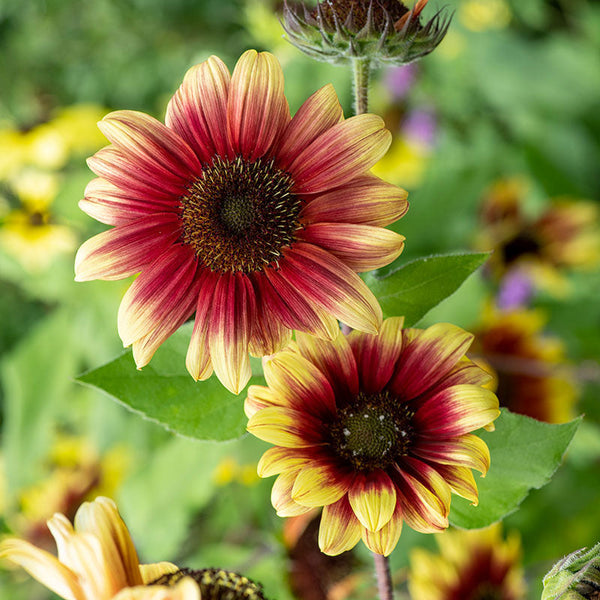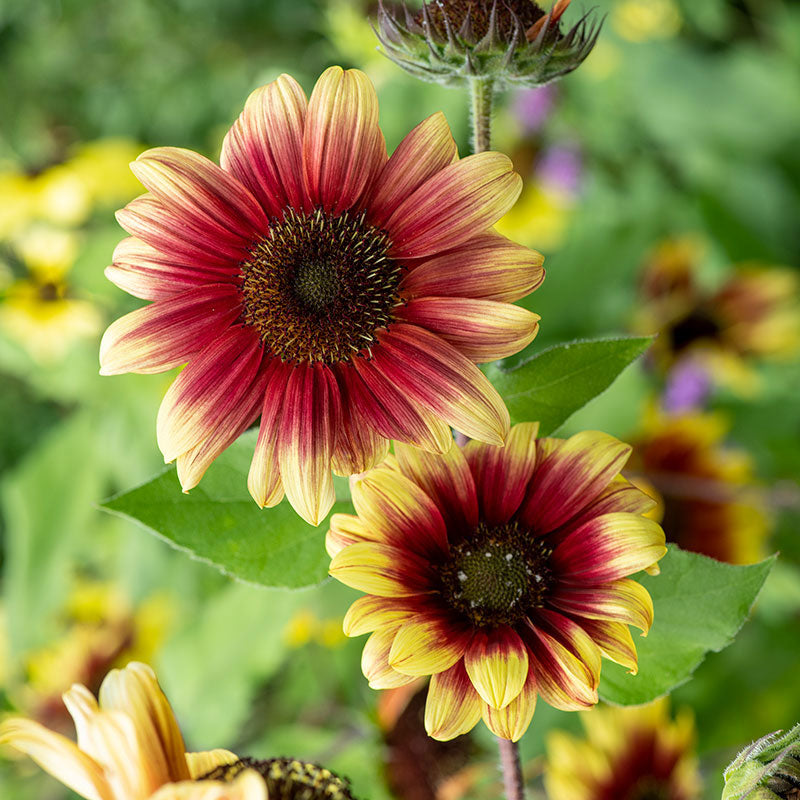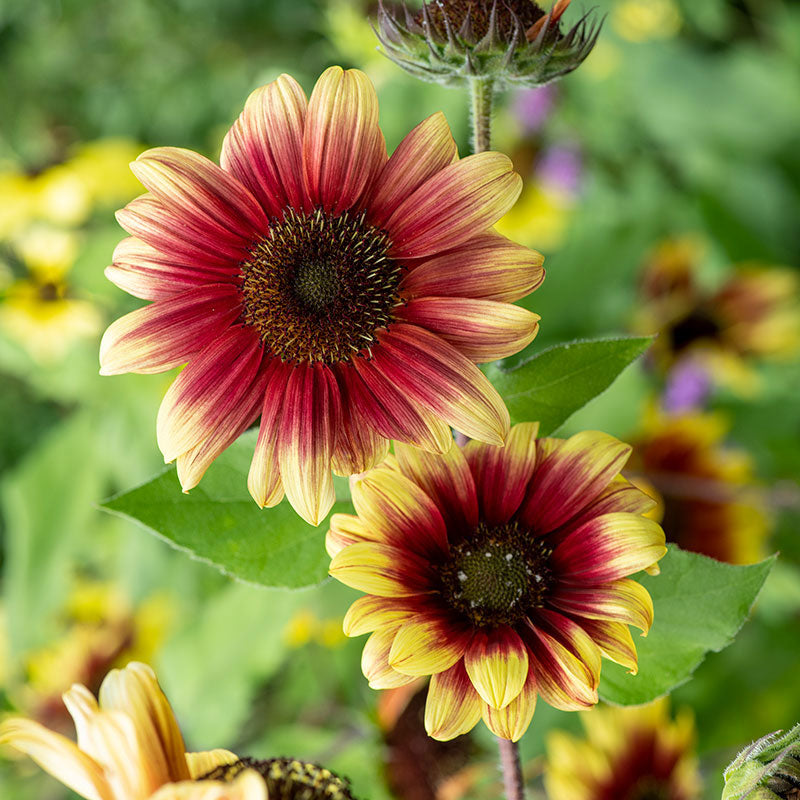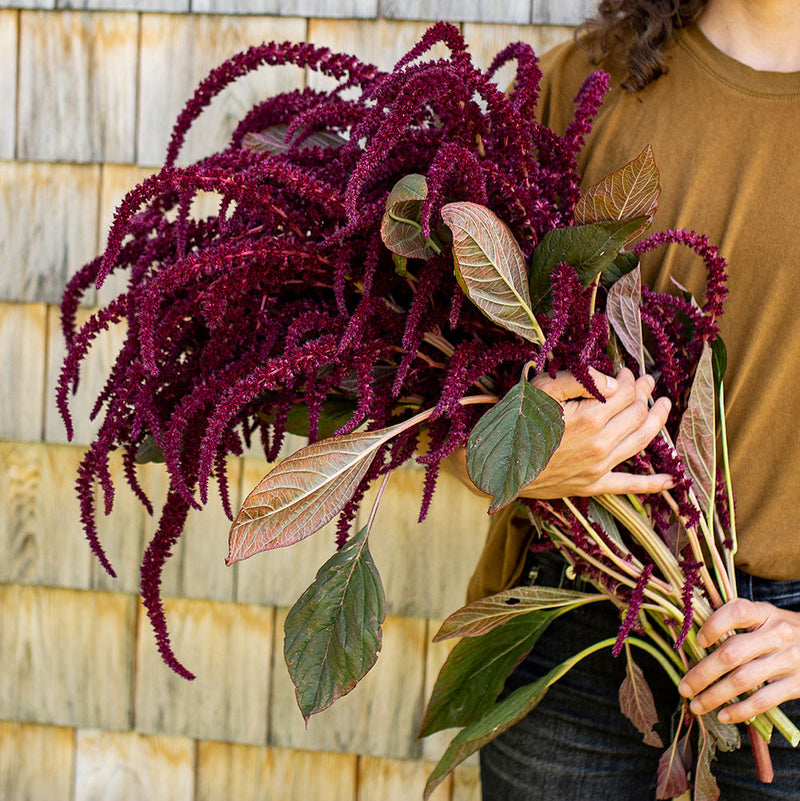SOWING INSTRUCTIONS
Seed To Bloom:
8-10 weeks
Starting Indoors:
Not recommended, as sunflowers grow very quickly and do best planted directly.
Starting Outdoors:
Direct sow after last frost.
PLACEMENT & CULTIVATION
Sunflower's full heads of bloom follow the sun, an attribute called heliotropism. Be sure to plant them where they receive a full day of sun, spaced well apart. Water infrequently but deeply once established to encourage vigorous, deeply rooted plants that can withstand summer storms. Plant in back borders in informal cottage gardens, at the edge of vegetable gardens, or as a leafy and flower-filled hedge, where it attracts butterflies, bees, and birds and can be easily cut for bouquets.
Watering Details:
About 1" of water per week, though they will tolerate some dryness.
Fertilizer:
Add 2" of compost and mix in prior to planting. Once established one application of a low nitrogen organic fertilizer is beneficial.
Diseases & Pests:
Space well apart for increased air circulation to discourage foliar disease that may develop in wet weather. Spray organic fungicides if needed. Remove crop residues after the season is over and rotate crops.
When to Cut for Bouquets:
Harvest when flowers start to open.






































